Experiencing Unique History and Culture Only Found in Jeonju, Procession Honoring King Taejo’s Portrait

The “Ceremony Recreating the Honoring of King Taejo’s Portrait” has returned after a 5-year hiatus. It’s an experience exclusive to Jeonju. Filled with excitement, I attended the ceremony.

Knowing it would start at 2 pm, I arrived early at Nosong Plaza, right in front of Jeonju City Hall, to get a good spot. The weather was just right. With the heat of summer behind us and the coolness of autumn setting in, 2 PM felt neither too hot nor too cold.
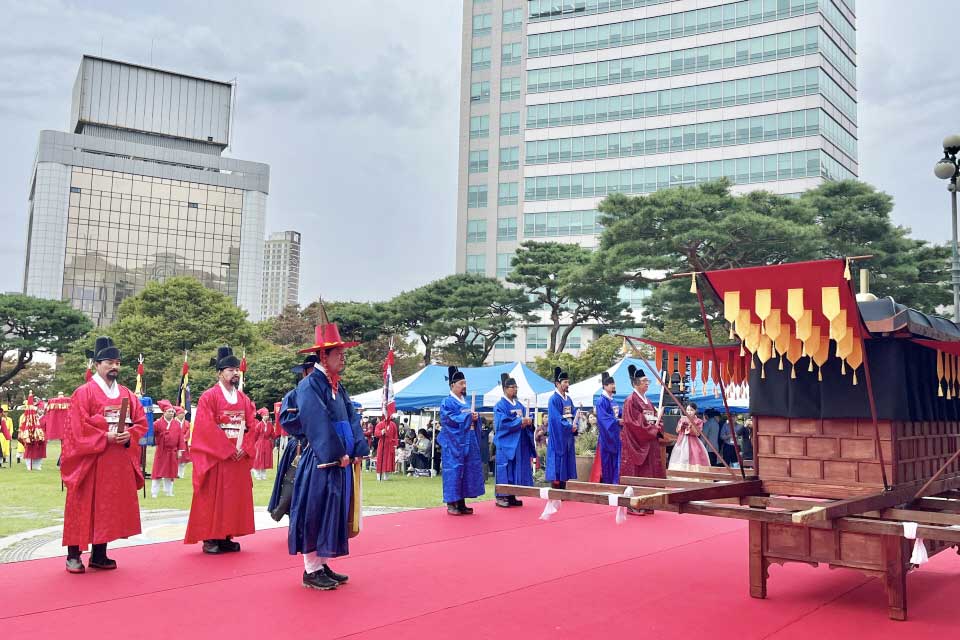
The event had several parts: a commemorative ceremony, an announcement of departure, the procession with King Taejo’s portrait, and the main honoring ceremony. Altogether, they spanned about two hours.
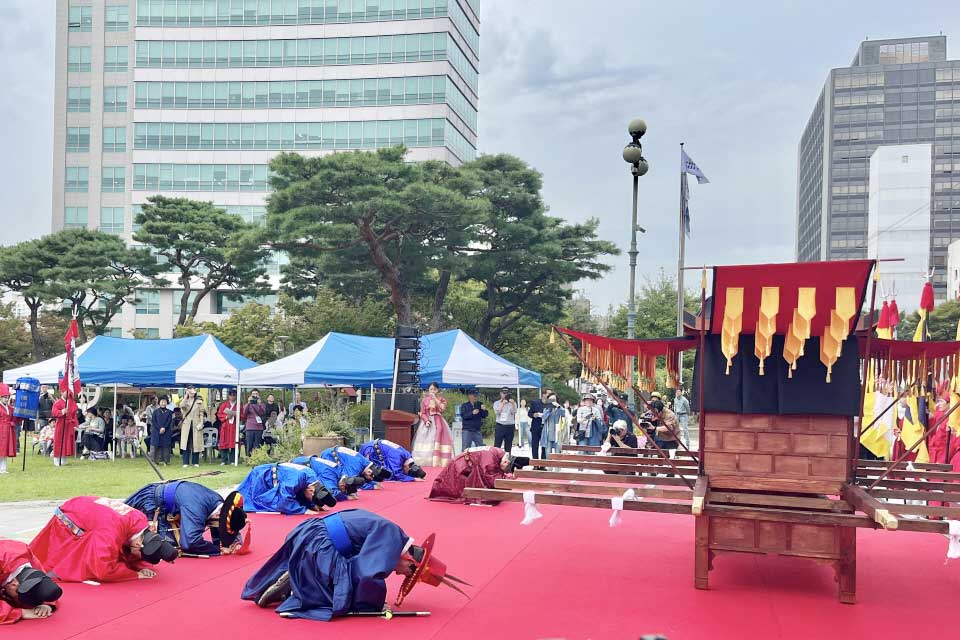
Nosong Plaza was the venue for the commemorative and departure ceremonies. During the event, we heard speeches from Mr. Woobeom Ki, the mayor of Jeonju, who acted as the Jeolla Province’s chief inspector, and Mr. Kidong Lee, the chairman of Jeonju City Council, who represented an official from Hanyang.
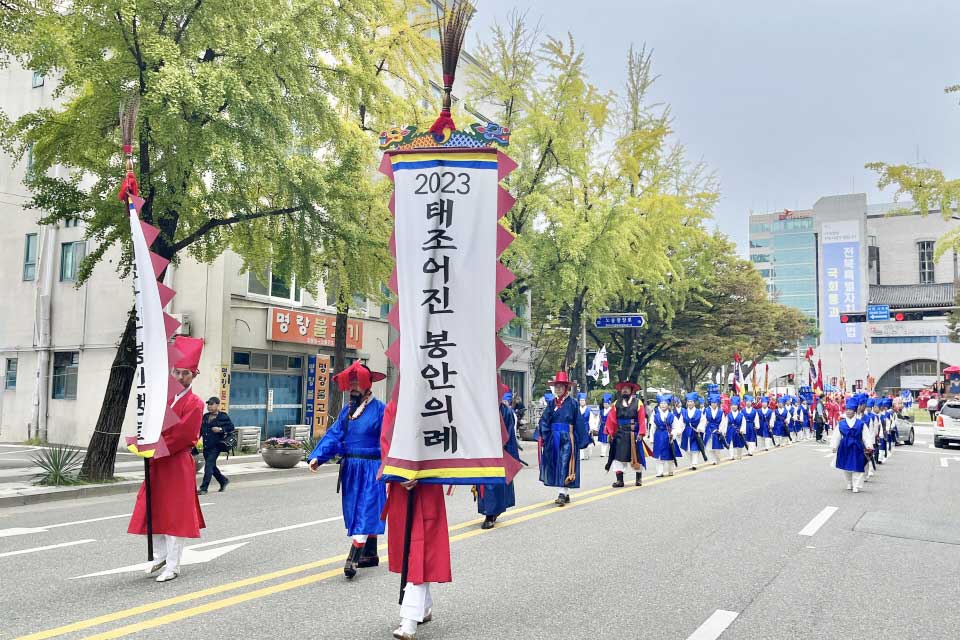
“Why call it a ‘recreation’ of the Honoring of King Taejo’s Portrait?”
In 1688 (during the 14th year of King Sukjong’s reign), the original portrait in Jeonju was taken to Hanyang to be replicated. Afterward, this replica was returned to Jeonju. This whole process is what we’re fortunate enough to witness in 2023!
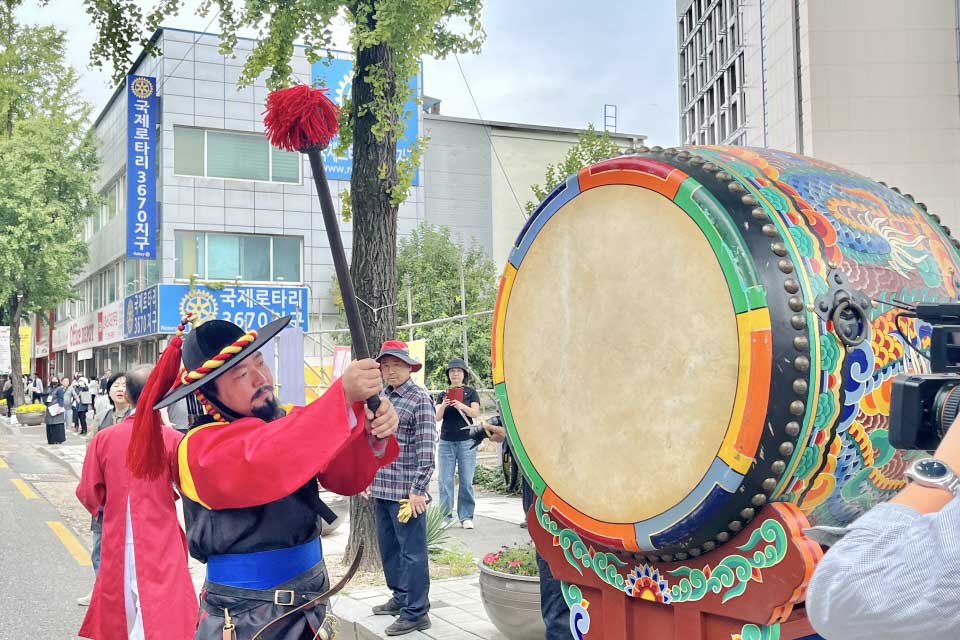
The procession started with a clear shout of “Jinbal~”, accompanied by the rhythmic beats of drums. “Jinbal” signifies the act of moving forward or starting, essentially signaling the beginning of the event.
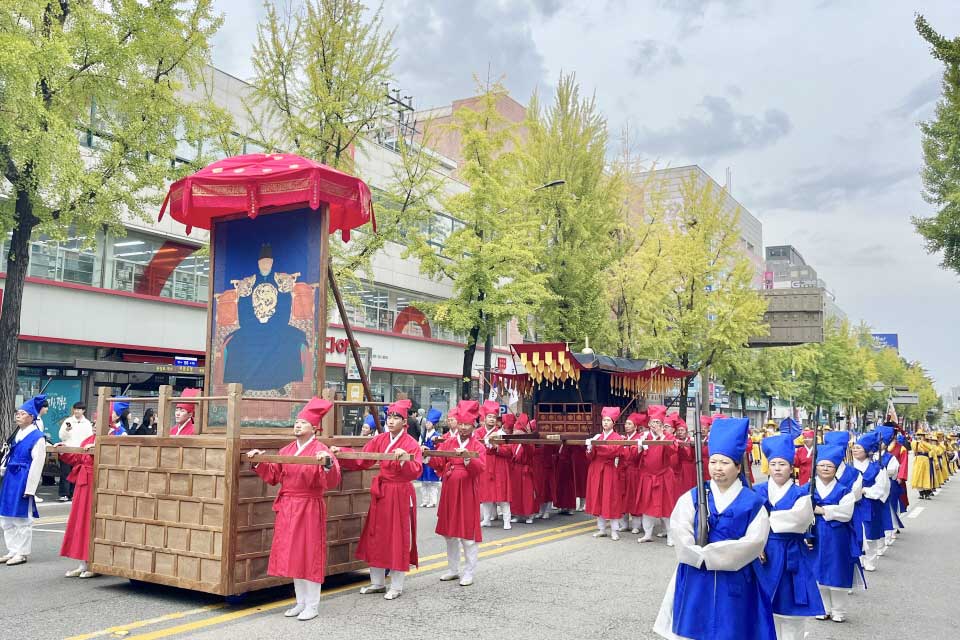
King Taejo’s portrait was the central piece of the procession. Following the portrait was the special palanquin, ‘Shinyeon’, traditionally used to transport royal portraits.
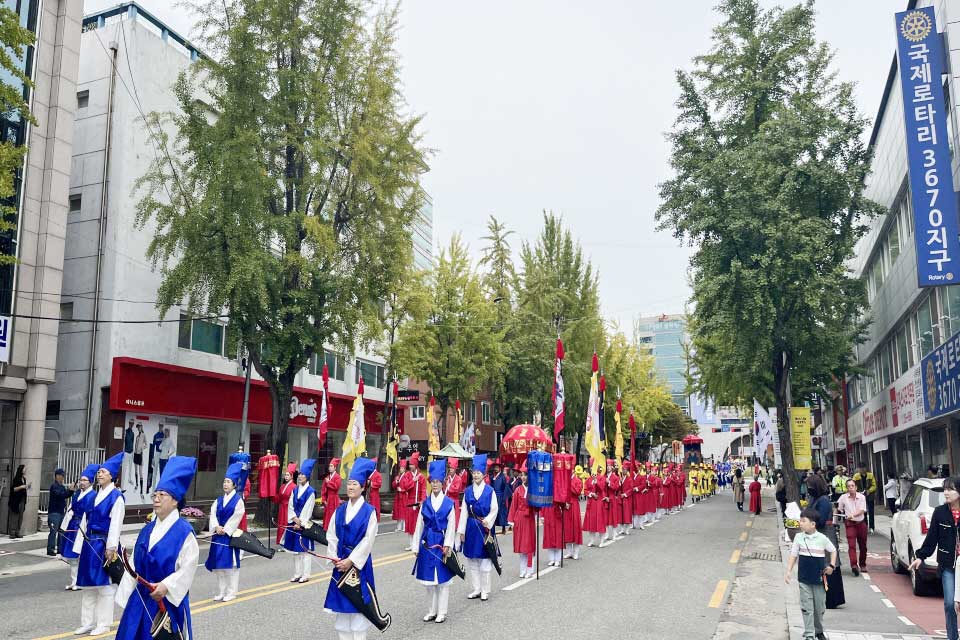
The procession moved from Nosong Plaza, through Ogeori Plaza, and onto Paldal-ro. It was a majestic sight to behold. The line of participants was impressively long, with hundreds taking part.
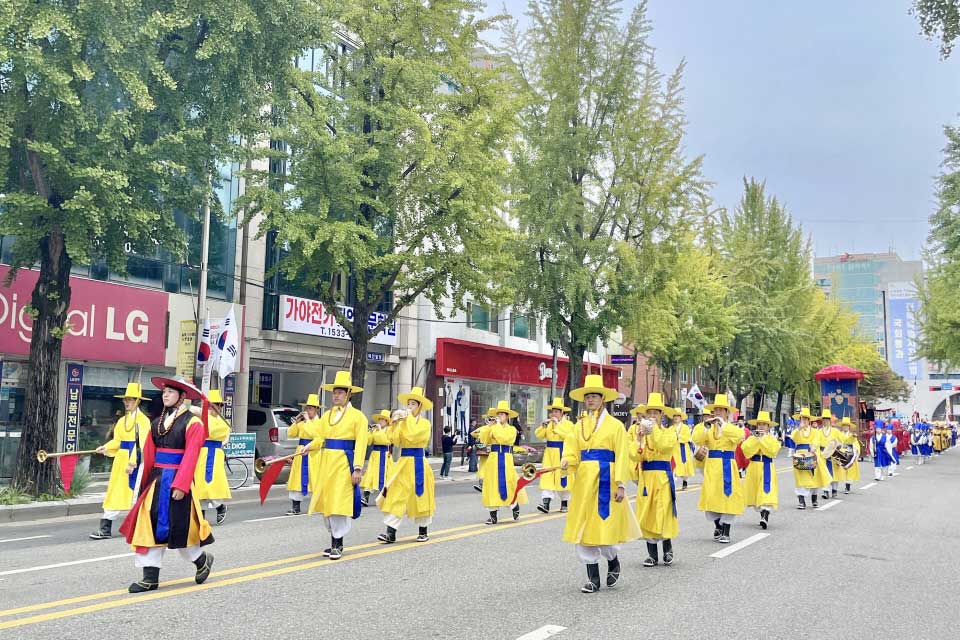
Adding to the event’s aura was the Chwita troupe. Their rhythmic beats always bring about a sense of tranquility.
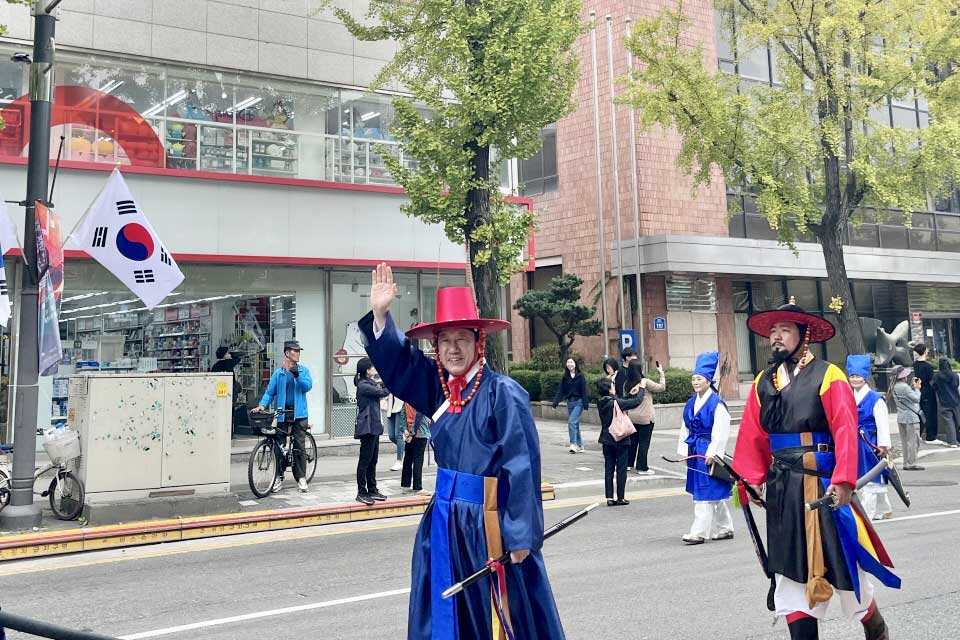
The chief inspector of Jeolla led the procession. It included a diverse group: the inspection team, Shinyeo, incense carriers, drummers, the Shinyeon palanquin, middle-ranking officers, scholars, an official from Hanyang, and the rear inspection team. The sheer scale and diversity were remarkable.


The procession’s attire and regalia have been refined with thorough historical research, adding to its authenticity. The event brought the essence of its historical era to life, making it truly remarkable.

Featured is the palanquin used to carry the incense burner and case. This specific palanquin, designed for ceremonial incense transportation, also displayed the incense burner within. It played a guiding role ahead of the ‘Shinyeon’ palanquin.
At the procession’s tail end, the folk musicians infused the streets with lively tunes. Watching the procession, one might wonder if the ancient spectators felt a similar joy during such events, reminiscent of our contemporary festivals.


“Eolssu~” perfectly captures the spirit of those passionately leading the procession.

Memorable photo sessions took place, especially near significant spots like Jeondong Cathedral and Gyeonggijeon. These sessions allowed everyone, participants and observers alike, to freeze moments in time.

Numerous spectators watched the procession with discipline, ensuring a seamless flow of the event.

A direct feed from inside Gyeonggijeon was showcased in the plaza, allowing attendees to view the rituals in real-time. The inclusion of historical context enriched the experience, captivating those inside and outside the venue.


Upon entering Gyeonggijeon, visitors were met with a profound atmosphere, contrasting with that of the procession. The attention shifted to moving the casket in the ‘Shinyeon’.

Bae~ Heung~
At the “Bae~” command, everyone bowed, and with “Heung~”, they stood, signaling the onset of the exclusive honoring ceremony. This ceremony unfolded in a setting of serene grandeur.

Jeonju Lee’, recognized as a royal surname, traces back to ‘Jeonju’, the ancestral residence of King Taejo Yi Seonggye, the Joseon dynasty’s founder.
The honor of hosting King Taejo’s portrait in Jeonju dates back to 1410 (during King Taejong’s 10th year). Of the six nationwide locations where it was celebrated, only Jeonju’s Gyeonggijeon retains the portrait today.

Given that Taejo’s portraits were initially distributed across cities like Pyongyang, Gyeongju, Kaesong, Yonghung, and Jeonju, the sole preservation in Jeonju emphasizes the city’s unique historical significance. Jeonju stands as a city rich in history and culture, preserving its legacy and offering unforgettable experiences to visitors.


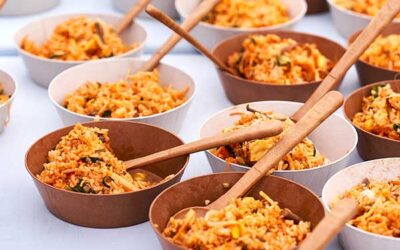
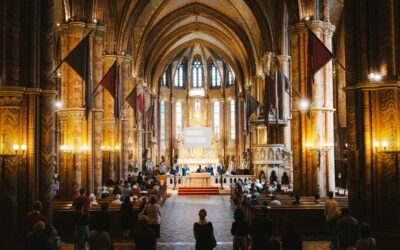
최신 댓글